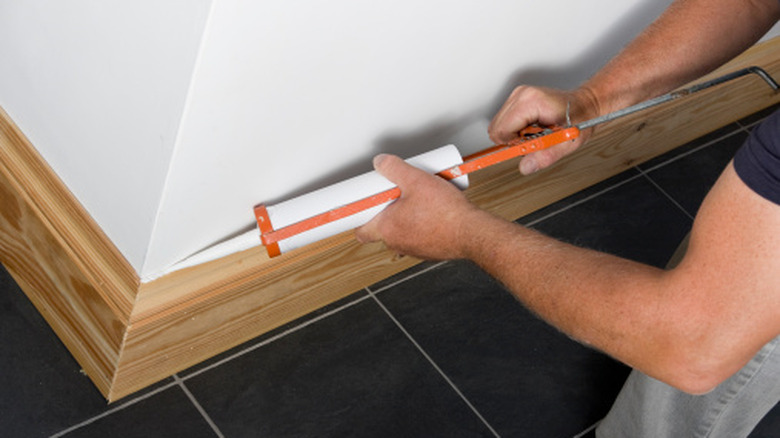The Key Argument For Using Wood For Your Baseboards And Trim
We may receive a commission on purchases made from links.
Baseboards might only take up a small amount of wall space, but they are not something to overlook when it comes to decor. The color, shape, and material of baseboards and trim can be a deciding factor in how the room looks as a whole, as they have the ability to either seamlessly tie every other design element together or possibly make things look odd and unfinished. And, with so many alternative material choices for baseboards these days, it's all too easy to make a vital mistake. When it comes to choosing material, wooden baseboards are still the way to go for most homeowners. We got an expert's opinion on why.
Jason Pietruszka, founder of JJP Construction, spoke exclusively with House Digest about why wood is such a popular material for your home's baseboards and trim even though other trending materials, like MDF, are also frequently used. He agreed that the main reason why many people use wooden baseboards and trim is because wood is durable and strong. "But there are other reasons too!" he said.
Why wood is a great choice
Wood remains the top choice for trim and baseboards for a few reasons. In the exclusive interview with House Digest, Jason Pietruszka elaborated on why he uses it for his own projects and what makes it such a good option over other trends like plastic or MDF. Those reasons go beyond the quality of wood and touch on the aesthetics of the end result and the ability to get a better quality finish with wood.
Because wood is such a tried and true material, it's no surprise that construction professionals and DIYers alike have an easier time making it look high-end. Pietruszka pointed out that while plastic and MDF can be painted, it can't have that beautiful, classic stained finish. On the other hand, he said, "You can get a stained finish on wood, and you can get a more high quality finish on the paint too."
Pietruszka acknowledged a nice finish could be done on other materials, but wood still gives the best result. "You can still achieve a great paint finish with MDF, but wood is definitely easier to prep and finish over all."
Comparing wood with other options
In the exclusive interview with House Digest, Jason Pietruszka spoke about the various trends in baseboards, including the rise in popularity of MDF (medium-density fiberboard) and plastic baseboards. He noted that some people might opt for these trending choices since they require less time and work.
"Plastic is not really a finish I have considered on any of my projects, but I could see [it] being useful in a quick flip or a DIY where someone doesn't want to have to paint," Pietruszka said. "Because it already comes finished, minting is not necessary." This is similarly true for MDF. "MDF also can come pre-primed, but it [is] usually not painted and does require being finished," he continued. "Wood usually does not come pre-primed." However, wood is still worth the potential extra time spent on the prime and paint process.
The overall cost may also contribute to some homeowners' choices in using a material other than wood. Pietruszka said one downside of using wood is its "higher cost of materials and potentially a higher cost of finishing it as well. Better materials usually require more attention to the finish." However, you can get around the priming and painting dilemma by looking into two-in-one options, like the Evolve Signature paint and primer, which will help even out the score of these materials. Ultimately, he advised that creating the baseboards of your dreams is still best done with wood, despite the potential upfront cost and extra time it may take. The quality result is well worth the effort.
